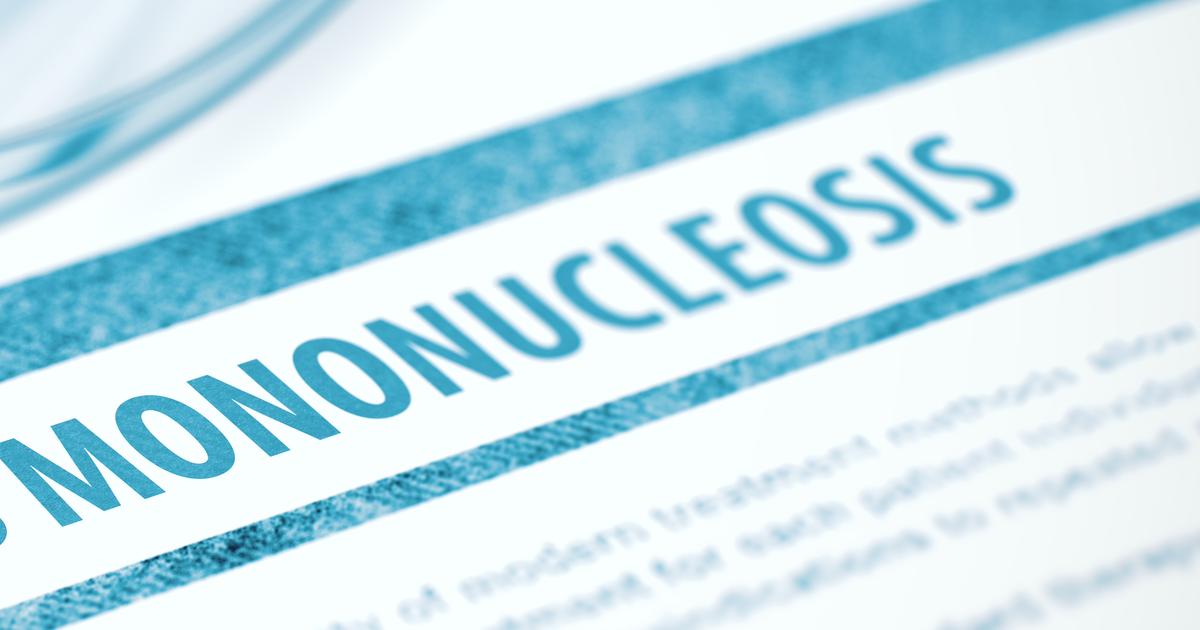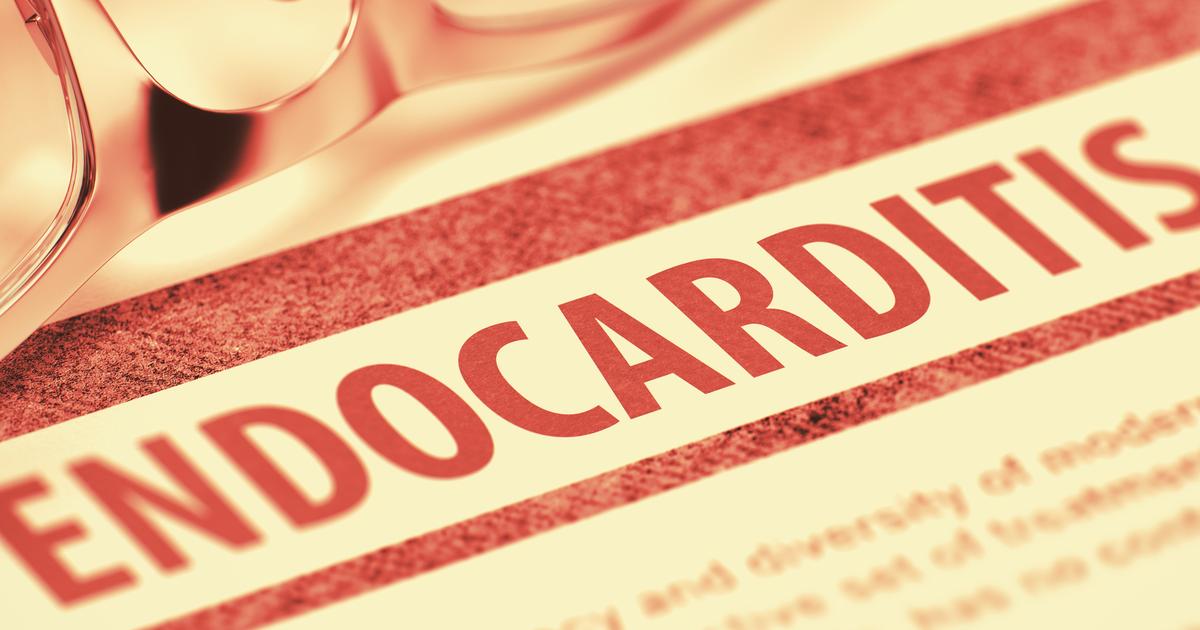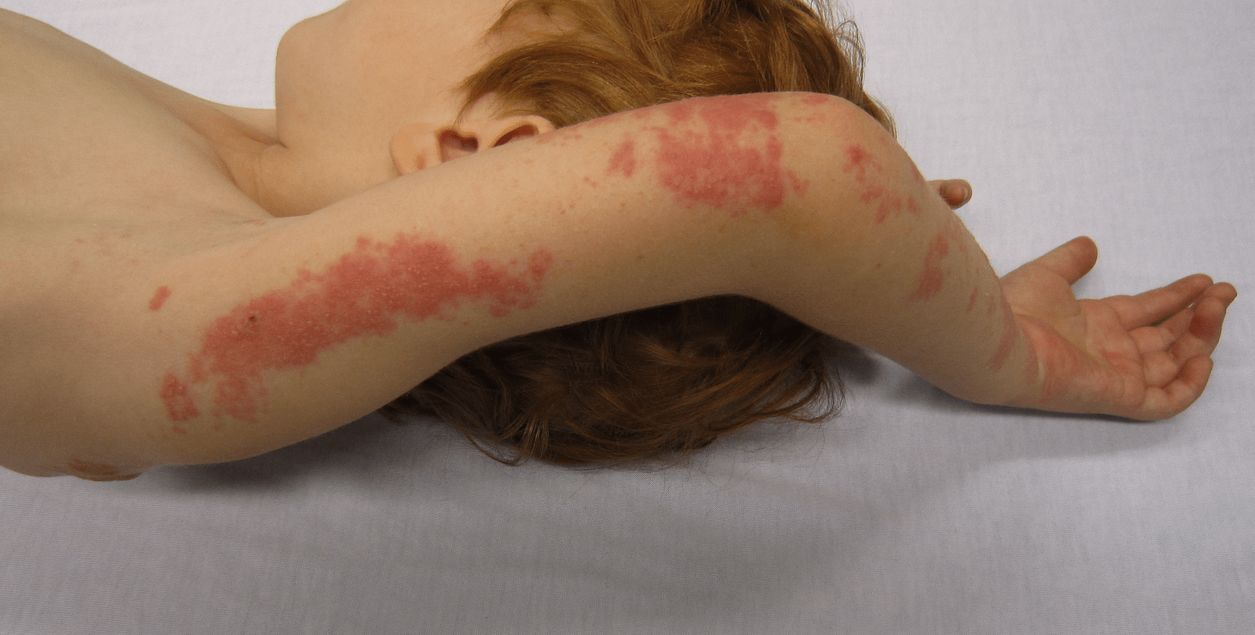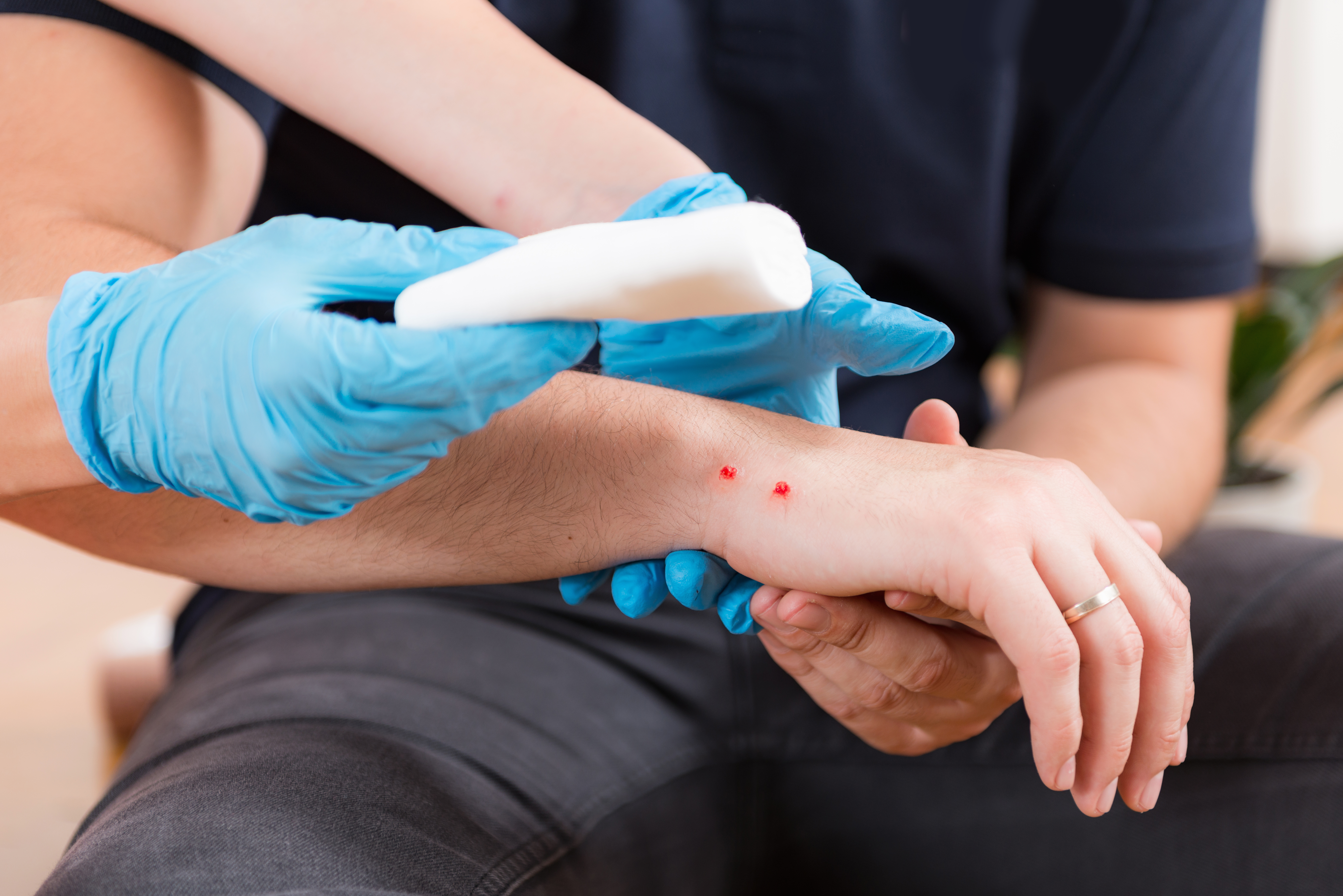20 Cause of Petechiae and What You Need to Know About Them
Petechiae may look small—but they speak volumes. These pinpoint spots, often red, purple, or brown, form when tiny blood vessels beneath the skin rupture. While they don’t fade under pressure or cause pain, they’re not just cosmetic. Petechiae can signal everything from mild physical strain to serious underlying infections, autoimmune diseases, or medication reactions. The key lies in what comes next: fever, fatigue, chest pain, confusion—these aren’t symptoms to ignore. We’ve expanded our list to 20 Causes of Petechiae and What You Need to Know About Them to help you decode what your body might be trying to say. From everyday culprits like intense coughing or heavy lifting, to more alarming possibilities like endocarditis or meningococcemia, this guide separates harmless from hazardous. Because understanding petechiae isn’t about panic—it’s about paying attention. Whether it’s a warning sign or a passing mark, knowledge gives you the power to act, ask, and advocate. Start here.
1. Injuries And Straining

Injuries and straining could both lead to the formation of petechiae. For example, patients might notice petechiae as a result of sunburn, and these spots could also form on areas of the skin frequently exposed to friction. Students and workers who carry heavy backpacks, purses, or other bags on an almost daily basis may develop petechiae on the shoulders or other areas that backpack and bag straps might rub. Injuries from blunt force trauma, including car accidents, hitting, or biting, may also produce petechiae. Straining from childbirth is a common cause of petechiae for women, and individuals who strain regularly while lifting weights could have petechiae too. Crying, prolonged coughing, and repeated vomiting may result in petechiae as well. In cases of straining, petechiae typically form on the neck, face, and chest, and they tend to be very small in size.
2. Strep Throat

Strep throat is a type of bacterial infection that can cause red and white patches at the back of the throat. Patients may also develop a rash, and they could develop petechiae on the soft or hard palate. Individuals who have strep throat often experience significant throat pain that appears very suddenly, and swallowing is generally painful too. Swollen lymph nodes may be present in the neck, and headaches, fever, and body aches are common. In young children with this infection, nausea or vomiting are particularly likely. To diagnose strep throat, the doctor will look at the patient's throat to check for swollen areas and petechiae, and patients will also need to have a throat swab performed. If strep throat is diagnosed, patients are normally treated with oral antibiotics, and they should stay home from work or school for at least twenty-four hours after starting antibiotics to avoid passing the infection to others.
3. Mononucleosis

Mononucleosis is a condition triggered by the Epstein-Barr virus. Also known as glandular fever, patients with this illness might initially be misdiagnosed with strep throat, as both conditions have many of the same symptoms. Some of the most common mononucleosis symptoms include fatigue, fever, swollen lymph nodes, swollen tonsils, a skin rash, and a sore throat. Some patients with mononucleosis may also have a swollen spleen. For many patients, the fatigue caused by this condition is severe enough that it is necessary to take several weeks off of work or school. To diagnose this condition, doctors will check the patient's spleen, lymph nodes, and throat, and they will need to perform blood tests to confirm the diagnosis. Since antibiotics are not effective against viruses, recommended treatments for mononucleosis generally consist of getting sufficient rest, staying hydrated, and taking over-the-counter pain relievers for any fevers or sore throats. Antibiotics will be given to patients with this condition who have a secondary infection such as strep throat, sinus infections, or tonsil infections. Patients may need two or three months to make a complete recovery from mononucleosis. During this time, physicians routinely advise patients to avoid heavy lifting and playing contact sports; these precautions are necessary to prevent a potential rupture of the spleen.
4. Vasculitis

Vasculitis occurs when there is blood vessel inflammation. Blood vessels may become thicker or narrower than they should be, and they might also weaken. There are several forms of this condition, and each patient's symptoms may be different. Symptoms associated with most forms of vasculitis include weight loss, fever, headaches, generalized aches and pains, fatigue, and night sweats. Some patients may experience numbness or other nerve issues. A rash known as Henoch-Schonlein purpura could form over the legs too. To determine the underlying cause for vasculitis, the physician will perform urine and blood tests, and patients might need to have CT scans, angiography, or biopsies. Corticosteroids are often prescribed to reduce inflammation, and some patients might also take methotrexate, mycophenolate, or azathioprine. If vasculitis causes blocked arteries or aneurysms, surgery may be needed.
5. Endocarditis

Endocarditis is a condition in which the inner lining of the heart, medically known as the endocardium, becomes inflamed. The condition is typically caused by bacteria, and it can also be triggered by an infection. The symptoms of endocarditis often develop gradually, and some cases may go undiagnosed. Common symptoms include fever, heart murmurs, joint pain, nausea, and a sensation of fullness in the upper left abdomen. Swelling of the abdomen, feet, or lower legs may occur, and some individuals experience a cough, shortness of breath, or blood in the urine. The petechiae that occur with endocarditis normally form on the whites of the eyes, the roof of the mouth, or the insides of the cheeks, and they might also be noticed on the chest. Patients could also have painful red spots located just underneath the skin of their fingers or toes. To diagnose endocarditis, doctors will listen to the patient's heart, and blood tests, echocardiograms, chest x-rays, and electrocardiograms may be performed. Treatment for endocarditis generally consists of both intravenous and oral antibiotics, and patients with the infective form may need surgery.
6. Cytomegalovirus

Despite the intimidating name, cytomegalovirus is a commonly occurring virus capable of infecting nearly anybody. This virus remains in an individual's body for their entire life after infecting them. The majority of individuals are unaware they have cytomegalovirus since it's rare for the condition to cause issues in healthy individuals. However, those who are immunocompromised or pregnant do have reason to be concerned about cytomegalovirus. Developing a cytomegalovirus infection during pregnancy can cause complications if the virus is passed on to the baby. If an individual's immune system is compromised, especially after an organ transplant, a cytomegalovirus infection might be fatal. The virus is spread through bodily fluids and has no cure. However, some medications can treat immunocompromised patients and newborns with the virus. Babies with cytomegalovirus might have petechiae, along with a host of more concerning symptoms, including an enlarged spleen and liver, impaired liver function, an abnormally small head, pneumonia, or seizures.
7. Reaction To Medication

Petechiae can sometimes develop as a reaction to a medication. The condition will typically resolve or at least stop spreading if individuals stop taking the medication. Antibiotics like penicillin and nitrofurantoin can cause petechiae, but it's important to finish the entire regimen, unless a doctor recommends otherwise. Failing to finish a course of antibiotics can make a bacterial infection return with an immunity to medication. The antidepressant desipramine and anticonvulsant carbamazepine have both been known to cause petechiae. Certain blood thinners like heparin and warfarin can cause the condition, as can the heart rhythm regulator atropine. Naproxen and indomethacin can also lead to petechiae, as can the sedative chloral hydrate. Even if individuals think one of these medications is causing their symptoms, they should still call their doctor to make sure there's not a more serious underlying cause.
8. Vitamin K Deficiency

A vitamin K deficiency is rare in the majority of individuals because vitamin K is plentiful across a wide range of foods. Vitamin K1 is found in plants, particularly kale, spinach, and other leafy greens. Vitamin K2 is created by the body inside the intestinal tract. This vitamin is necessary for blood clotting, which helps prevent excessive internal and external bleeding. If individuals have a vitamin K deficiency, their body might not be able to clot as well, which can lead to blood vessel damage that presents as petechiae and abnormal bruising. Without vitamin K, the body is incapable of creating the proteins that clot the blood. Bleeding too much is the main symptom of vitamin K deficiency. In addition to bruising and petechiae, patients might find they experience nosebleeds, bleeding gums when brushing their teeth, and minor abrasions that bleed for much longer than they usually would. There's also some evidence indicating vitamin K has an effect on bone health, but scientists haven't yet drawn a conclusive link. When vitamin K deficiencies do occur, it's usually due to a medical condition that prevents the body from creating enough vitamin K2. Certain medications can also keep the body from creating or absorbing vitamin K the way it's supposed to.
9. Meningococcemia

Meningococcemia first occurs in the respiratory tract and causes a host of unpleasant symptoms like nausea, fever, muscle pain, headache, as well as petechiae. The infection comes from the same bacteria responsible for meningitis. Meningitis occurs when the bacteria infect the protective coverings of the spinal cord and brain. Meningococcemia, on the other hand, occurs when the bacteria infect the blood without infecting the nervous system. Some individuals develop both infections simultaneously, with the bacteria first entering the blood and then passing into the nervous system. The bacteria commonly exist in the upper respiratory tract without causing illness symptoms. But if they do cause an infection, it's a medical emergency that must be treated immediately. Research indicates ten percent of individuals might carry the bacteria without an infection. If an infection develops, it's typically spread through sneezing and coughing. The most vulnerable individuals are children younger than four years old, who make up about half of all cases worldwide.
10. Scarlet Fever

Scarlet fever can occur as a secondary illness in individuals with strep throat. The condition creates a vivid red rash that covers the majority of the body. This isn't necessarily petechiae, but it can look extremely similar and be easily mistaken for it. Nearly every case of scarlet fever includes the rash, a sore throat, and a concerningly high fever. Children between five and fifteen years old are most susceptible to the condition. In the past, scarlet fever was a serious enough illness to be deadly or permanently disabling. Modern antibiotic regimens have greatly reduced the seriousness. But failing to treat scarlet fever can cause the body to develop issues that damage the kidneys, heart, and other organs. If individuals have a rash that looks like petechiae alongside strep throat symptoms and a high fever, they need to be seen by a doctor immediately. The longer patients go without treatment, the higher their risk of developing serious complications. The patient's tongue might also be bright red and look bumpy, like the texture of a strawberry.
11. Thrombocytopenia from Viral Illnesses

Many viruses can cause a drop in platelet count—a condition known as thrombocytopenia—which directly contributes to the formation of petechiae. Viruses like dengue, Zika, hepatitis C, and even influenza can temporarily suppress the bone marrow, making it harder for the body to produce the platelets necessary for blood clotting. The result? Tiny red or purple spots that may first appear on the lower legs or inside the mouth. Petechiae linked to thrombocytopenia are often accompanied by easy bruising or bleeding gums. It’s critical to get a complete blood count (CBC) test if you notice these signs following a viral illness.
12. Leukemia

One of the earliest visible signs of leukemia—a cancer of the blood and bone marrow—can be petechiae. As leukemia progresses, it interferes with the body’s ability to produce platelets, causing unexplained bleeding and pinpoint red spots. These spots often appear on the chest, arms, or legs and may go unnoticed at first. If petechiae are accompanied by persistent fatigue, frequent infections, night sweats, or swollen lymph nodes, a full blood panel and bone marrow biopsy may be necessary. Early detection is crucial, as petechiae could be your body's quiet first signal of a much larger battle ahead.
13. Hemolytic Uremic Syndrome (HUS)

This rare but serious condition typically follows an E. coli infection, particularly in young children. HUS causes red blood cells to break down prematurely, damaging blood vessels and reducing platelet levels. As platelets drop, petechiae may develop, especially on the lower extremities. More alarmingly, HUS also affects kidney function, which can lead to swelling, low urine output, or even acute renal failure. If petechiae appear after a bout of severe diarrhea—especially bloody diarrhea—it’s a red flag. Immediate hospitalization is essential, as supportive care and fluid management can be life-saving in managing HUS.
14. Scurvy (Severe Vitamin C Deficiency)

Though it sounds like something from a pirate movie, scurvy is very real—and still occurs today, particularly in cases of extreme dietary restriction. Vitamin C is essential for collagen production, which helps maintain blood vessel integrity. Without enough of it, capillaries break down, leading to petechiae, bruising, bleeding gums, and joint pain. Petechiae from scurvy often appear on the legs first and can spread upward. The good news? Scurvy is completely reversible with vitamin C supplementation. In as little as a week, patients can begin to see healing. It’s a stark reminder of how nutrition directly shapes skin and blood health.
15. Sepsis

When the body goes into overdrive fighting an infection, it can trigger widespread inflammation that damages blood vessels and reduces platelet levels—a deadly combination. Petechiae in sepsis are often a precursor to more extensive purpura or bleeding under the skin, sometimes progressing to a condition known as disseminated intravascular coagulation (DIC). If you or someone you love develops petechiae alongside confusion, rapid heartbeat, fever, or labored breathing, seek emergency care immediately. Time is critical in managing sepsis, and petechiae may be one of the only visible early signs that the body’s systems are beginning to fail.
16. Kawasaki Disease

Kawasaki disease is a rare inflammatory illness that primarily affects children under five. It causes blood vessel inflammation throughout the body, often leading to a high fever, swollen hands and feet, red eyes, and cracked lips. Petechiae may appear along with a widespread rash, particularly in the early stages. While the exact cause is unknown, the condition can lead to serious heart complications if not treated promptly. Diagnosis is clinical and often confirmed with blood tests and echocardiograms. Intravenous immunoglobulin (IVIG) is typically used to reduce inflammation. Petechiae in this context are more than skin-deep—they're vascular alarms.
17. Snake or Insect Venom Exposure

Some types of venom—especially from vipers or certain exotic insects—can cause blood vessel damage and disrupt normal clotting, leading to petechiae. These small red dots may appear near the bite site or spread systemically depending on the potency of the venom. In some cases, the venom causes hemolysis or direct platelet destruction, leading to internal bleeding. This can be a medical emergency, especially in areas where access to antivenom is limited. If petechiae develop rapidly after a bite or sting—especially with swelling or neurological symptoms—don’t wait. Seek medical care immediately, as time-sensitive interventions can be life-saving.
18. Intense Weightlifting or Physical Exertion

Believe it or not, pushing your body too hard at the gym can lead to petechiae. During extreme exertion—like lifting heavy weights, performing max-effort squats, or holding your breath while straining—you can break small capillaries, especially in the face, neck, and upper chest. This is often seen in powerlifters and athletes after intense competition. Known as “effort petechiae,” the spots are harmless but serve as a reminder to breathe properly and avoid overstraining. If the marks persist or appear without physical exertion, however, it’s worth exploring other medical causes.
19. Autoimmune Thrombocytopenic Purpura (ITP)

ITP is an autoimmune disorder where the body mistakenly attacks its own platelets, resulting in low platelet counts and frequent bruising or petechiae. The condition may develop after a viral infection or emerge without a clear trigger. It’s most common in children and young adults, though adults can also be affected. Petechiae often appear on the lower legs, gums, or inside the mouth. Mild cases may resolve on their own, but more severe ITP might require corticosteroids, IVIG, or even spleen removal. Monitoring platelet levels is crucial for managing flare-ups and preventing more serious bleeding.
20. Bone Marrow Disorders (e.g., Aplastic Anemia)

Bone marrow is responsible for producing blood cells—including platelets. In rare disorders like aplastic anemia, the marrow fails to generate sufficient cells, leading to fatigue, infections, and bleeding. Petechiae are often one of the first visible signs, especially in children or teens. Causes range from autoimmune attacks to exposure to certain chemicals or radiation. Diagnosis involves a bone marrow biopsy and blood tests. Treatment options may include immunosuppressive therapy, blood transfusions, or bone marrow transplants. In these cases, petechiae are not just skin symptoms—they’re early warnings of deep systemic failure.
Petechiae may seem minor—tiny red or purple dots barely noticeable at first glance—but they’re often the first visible clue that something deeper is at play. From intense workouts and vitamin deficiencies to autoimmune disorders and life-threatening infections, these pinprick marks can whisper what your body hasn’t yet shouted. With 20 causes now uncovered, we’ve gone far beyond the obvious to spotlight the hidden, the rare, and the critical. Whether they fade on their own or demand urgent intervention, petechiae deserve your attention. Knowing when to watch, when to ask questions, and when to act could be the difference between catching a condition early and missing something vital. So don’t dismiss the dots. Let them guide your curiosity—and your care. Because when your skin speaks, it’s not just a rash or a blemish. It’s a message. And now, you know how to listen.
